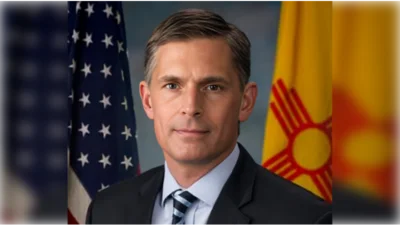The Congressional Record is a unique source of public documentation. It started in 1873, documenting nearly all the major and minor policies being discussed and debated.
“PRESIDENT CLINTON'S ADMINISTRATION OF JUSTICE BUDGET CUTS” mentioning the U.S. Dept. of Justice was published in the Senate section on pages S1133-S1134 on Feb. 3, 1999.
The publication is reproduced in full below:
PRESIDENT CLINTON'S ADMINISTRATION OF JUSTICE BUDGET CUTS
Mr. HATCH. Mr. President, even as the Senate has been weighing historic matters, the important work of the Judiciary Committee has gone forward as well. I am pleased to report that the Judiciary Committee is working to develop an agenda that will continue the Senate's commitment to the American people to make our streets safe from crime, to ensure that the benefits of this great technological and communications age reach all our people unencumbered by artificial legal barriers, and to ensure that we preserve and protect the rule of law. I will have more to say in the coming days about this agenda. Today, however, I would like to focus my comments on what I believe are highly irresponsible cuts to administration of justice programs in the President's budget proposal.
This year, criminal justice issues should and will once again require the attention of the Senate. Many of our communities are not sharing equally in the decline in crime rates. For instance, according to FBI data, while the rate of violent crimes decreased nationally by four percent in 1997, the FBI's Uniform Crime Reports demonstrate that in the Mountain West, the decline was only 2.4 percent, and my state of Utah posted a slight increase. Similarly, property crimes decreased nationally 3.1 percent, but only decreased one-half of one percent in the Mountain West. Again, my state of Utah actually had an increase in property crime. Compared to rates in the Northeast, the violent crime rate is 46.4 percent higher in the West and 52.1 percent higher in the South.
And it is not just crime rates that need further improvement. The youth drug epidemic continues to plague us. According to the National Institute of Drug Abuse's Monitoring the Future surveys, drug use among our youth has grown substantially, and recent marginal improvement cannot hide the fact that more of our young people than ever are ensnared by drugs. From 1991 to 1998, the lifetime use of marijuana--
the gateway to harder drugs--has increased among school-age youth. The number of 8th graders reporting to have ever used marijuana has increased by 55 percent from 1991 to 1998, and the number of 8th graders who have used marijuana within the past year has increased by 173 percent in that same time.
Not surprisingly, then, use of harder drugs has also increased. The number of 8th graders who have used cocaine within the past year has increased by 181 percent from 1991 to 1998, and the number these students who have used heroin within the past year has increased by 86 percent in the same time period. And significantly, 1997 to 1998, lifetime heroin use by 8th and 10th graders has increased by 0.2 percent, meaning that the use of this deadly drug is still on the rise among our youth.
Because we have so far to go in our fight against crime and drugs, I am particularly disturbed by the President's proposed budget for the Department of Justice. The Clinton budget provides only a marginal 1.6 percent increase in DOJ funding for FY 2000. But even this slight increase pales compared to the massive cuts President Clinton is proposing in assistance to state and local law enforcement. Let me alert my colleagues to what the President is proposing.
Undisclosed by the Administration's spin machine and most media reports, President Clinton is proposing more than $1.5 billion in cuts to state and local crime fighting efforts. Among the programs on the President's chopping block is the entire Violent Offender and Truth in Sentencing Incentive Grant program. This program has, by any measure, been a tremendous success, providing critical seed money to states for bricks and mortar prison construction and thus making our streets safer.
Incarceration deters crime. Dramatic and historic reductions in sentence lengths and the expectation of punishment from the 1950s onward fueled steep increases in crime in the Sixties, Seventies, and Eighties. Only after these incarceration trends began to be reversed in this decade, did crime rates start to fall also.
The Violent Offender and Truth in Sentencing Incentive Grant program has been an important component of this effort. In response to federal assistance, states have changed their sentencing laws. As the President's own Justice Department reported just last month, because of this program, 70 percent of prison admissions in 1997 were in states requiring criminals to serve at least 85 percent of their sentence. The average time served by violent criminals has increased 12.2 percent since 1993. With such success, why would the President want to eliminate this program?
And he doesn't stop there. Also eliminated in the President's budget is the highly successful Local Law Enforcement Block Grant program, which since 1995 has provided more than $2 billion in funding for equipment and technology directly to state and local law enforcement. The President wants to cut 20 percent from the Bulletproof Vest Partnership Grant Act, which he signed into law just last year, to provide vests to protect officers whose departments otherwise could not afford this life-saving equipment. The President wants to cut $50 million from the successful and popular Byrne Grant program, which provides funding for numerous state crime-fighting initiatives, and he proposes funding changes that put this program at further risk in future budgets. The President wants to cut by $85 million funding that reimburses states for the costs of incarcerating criminal aliens. He wants to cut $4 million from the Violence Against Women program, and
$12.5 million from COPS grants targeting violence against women. And the Clinton budget slashes the entire juvenile accountability block grant, which over the past two years has provided $500 million for states and local government to address the single most ominous crime threat we face--serious and violent juvenile crime.
Mr. President, the recent gains of state and local law enforcement in the fight against violent crime are fragile, and have been based largely on the Congress's endless push to place the interests of the law abiding over the establishment of new social spending programs. Time and again, Congress has had to remind President Clinton that government's first domestic responsibility is to keep our streets and communities free from crime.
From the earliest days of the Clinton Administration, the President proposed severe cuts in law enforcement. For example, in March 1993, the President took the unprecedented step of firing every incumbent United States Attorney, a move the Administrative Office of the U.S. Courts later said contributed to significant declines in federal prosecutions.
In 1994, the President proposed cutting 1,523 Department of Justice law enforcement positions, including 847 in the FBI, 355 in the DEA, and 143 in U.S. Attorney's offices. Congress said no.
In 1996, 1997, and 1998, the President has proposed cuts to state and local law enforcement assistance. Congress has said no.
And ever since 1995, the President has wanted to use badly needed prison construction grants intended for bricks and mortar to fund drug treatment and other social programs not shown to have the same crime deterrent effect. Congress has said no.
Now the President wants to cut the program entirely, and make further cuts in assistance to state and local law enforcement. Let me summarize these cuts:
$50 million in Byrne grants for state and local law enforcement--Cut.
$523 million in Local Law Enforcement Block Grants--Cut.
$645 million in Truth in Sentencing Grants--Cut.
$85 million for criminal alien incarceration--Cut.
$250 million for juvenile crime and accountability grants--Cut.
$4 million in Violence Against Women Grants--Cut.
$12.5 million in COPS grants targeting domestic violence--Cut.
Even the President's own COPS program--$125 million Cut.
And what does the President want to fund? $200 million for a program to turn prosecutors into social workers, who ``focus on the offender, rather than the specific offense,'' and provide punishments such as recreational programs for criminals up to age 22 who commit violent offenses, including weapons offenses, drug distribution, hate crimes, and civil rights violations.
It appears that Congress will have to say no again, and once again remind President Clinton that our government's first domestic duty is to protect the people from crime and violence. I will have more to say in the coming days about the President's budget and the Judiciary Committee's agenda, but suffice it to say, however, that I find President Clinton's budget for Administration of Justice spending is in need of significant attention.
I intend to see that this budget and administration of justice programs get that attention. As Chairman of the Judiciary Committee, I would like to advise my colleagues that a priority of the Committee this year will be the reauthorization of the Department of Justice. Included in this will be efforts to address expiring authorizations from the 1994 crime law, a number of which have been vital to assisting state and local government in reducing crime. I hope and expect that we will consider, on a bipartisan basis, the important funding and policy questions inherent in this effort, so to ensure that the Department can continue into the next century its important mission of upholding the rule of law.
We will hold a series of hearings, both in the newly established Criminal Justice Oversight Subcommittee and at Full Committee, with the goal being to ensure that the Department of Justice is making the most of the precious law enforcement dollars appropriated and that essential law enforcement priorities are being met for the American people.
Mr. President, I appreciate my colleagues' attention. I look forward to working with them on these important matters. I thank the Chair, and yield the floor.
____________________








